Read on for our detailed analysis of each CDN
A content delivery network (CDN) works to accelerate almost any website by caching its files in servers around the world. Whether your visitors come from Europe, North America, Asia or anywhere else, content is automatically served from the nearest location for the fastest possible speeds.
If you're new to the technology then it might seem intimidating, and there's no doubt that prices can be high, but don't let that put you off. A CDN is not just for massive corporations. You can set up the simplest services in less than five minutes, and if you choose your plan wisely, it might not cost you anything at all.
Whatever your website, from a simple blog to a sprawling site for a big business, we've picked out some of the best services around to help point you in the right direction. If you find anything that looks interesting, give it a try – you can explore many of these CDNs for free, without handing over payment details or signing up for any contract.
- We’ve also rounded up the best VPN services.

Inmotion hosting offers shared hosting, a WordPress and BoldGrid-based graphical Website Creator, managed WordPress, managed and cloud VPS, reseller plans, managed and bare metal dedicated servers, high-end enterprise products, and the list goes on. Harness the power of the command line with full root access on the $99.99/month Essential Quad-core Xeon server.
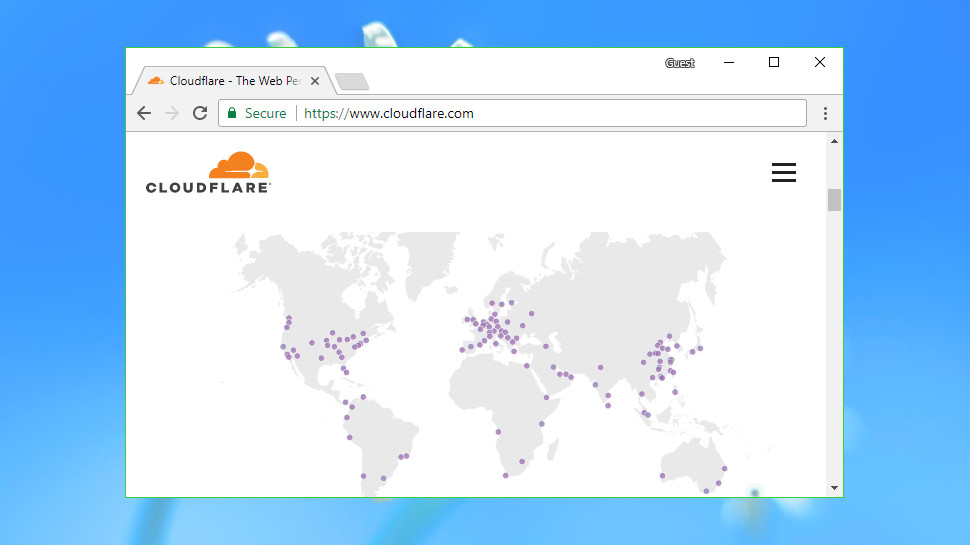
Cloudflare is a hugely popular American content delivery service that combines novice-friendly ease of use with expert-level features and functionality.
Setup is simple, with no need to edit your code. Just update your DNS nameservers to use Cloudflare and the service kicks in automatically, caching content and serving it to visitors from their nearest location.
But there's much, much more. Web filtering can block bots, limit content spam, keep you safe from hackers or detect and mitigate DDoS attacks. Smart image optimizations can reduce image file sizes by up to 35%, further improving speeds. There's wide support for standards like IPv6, HTTP/2 and SPDY, clever page rules to help you manipulate traffic, and a REST API allows developers to take full control of what the service is doing. Also, Flan Scan, a lightweight network vulnerability scanner is thrown in the mix too.
Cloudflare's free plan allows you to see what the service can do, without making any commitments. It's very usable, with unlimited bandwidth and no annoying restrictions to try and force you to upgrade.
Upgrading to the Pro plan costs a reasonable $20 (£16) a month, and adds the image optimization rules, extra configurability, and improved support.
Whatever you choose, Cloudflare delivers great performance. As we write, the benchmarking site CDNPerf ranks Cloudflare in top eight for worldwide HTTP request response times.

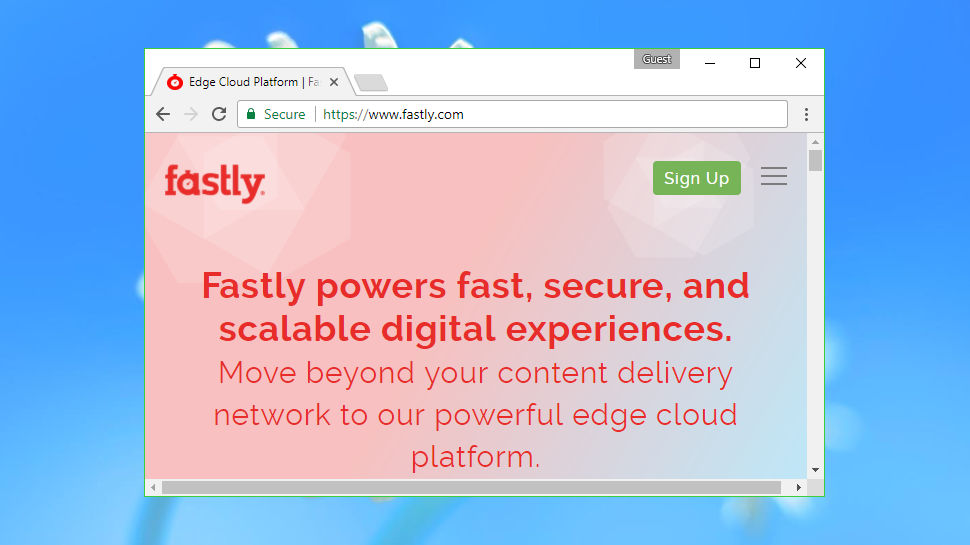
Fastly provides CDN tricks for some really big organizations, including the likes of Spotify and Reddit, and the firm lives up to its name, delivering impressively fast performance levels. Going by the rough guideline of CDNPerf’s rankings, it’s the second fastest CDN for the UK, and worldwide speeds are mostly good, too.
Perhaps Fastly’s strongest point, however, is just how configurable the service is. For example, there’s diverse support for different types of video caching, and tons of low-level controls for those who want to get stuck into the likes of manipulating HTTP headers to customize how content is served. For convenience, you can log in to multiple Fastly customer accounts with a single set of credentials.
Of course, some know-how is required to set up everything, and novices to the CDN world will doubtless be confused by all the options on offer. But for those who need this level of flexibility and configurability, it’s priceless to have.
Speaking of the price, Fastly operates a pay-as-you-go model with a minimum charge of $50 (£37) per month. In addition, you can test up to $50 of traffic for free.

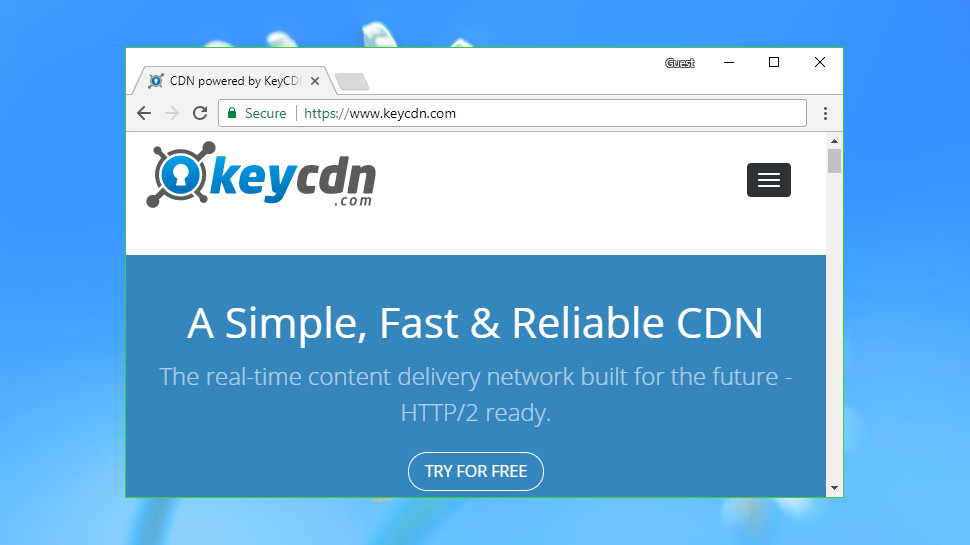
KeyCDN is an easy-to-use budget CDN that might be a good pick for first-time users.
Getting started couldn't be much simpler. Sign up with your email address and you get an immediate 25GB to play with, no payment details required. A well-designed web dashboard enables creating your first zone with the minimum of clicks, and there are guides to help you integrate the service with WordPress and other apps.
In addition, KeyCDN fully supports IPv6.
More experienced users will appreciate options like Origin Shield – this allows you to specify a KeyCDN server to be the source for updates rather than the origin, reducing your server load. You're able to manipulate headers, cache or strip cookies, or set up a custom robots.txt. Once the service is running, a capable set of reporting tools enable watching CDN performance in near real-time. Some additional features are available as well, like Block Referrer that blacklists the domains that are hotlinking content or Image Processing, which is great for image optimization.
KeyCDN's standout feature has to be its low prices. Bandwidth charges start at $0.04 (£0.032) per GB, less than half the price you'll pay with some of the high-end competition. The minimum usage is a tiny $4 (£3.2) per month and the minimum payment is $49 (£38). The company doesn't even try to cash in on the extras, for example offering shared SSL and custom Let's encrypt SSL certificates for free.
Perhaps unsurprisingly, these low prices don't get you leading-edge performance, but there's still plenty of power here and you do get a lot for your money.

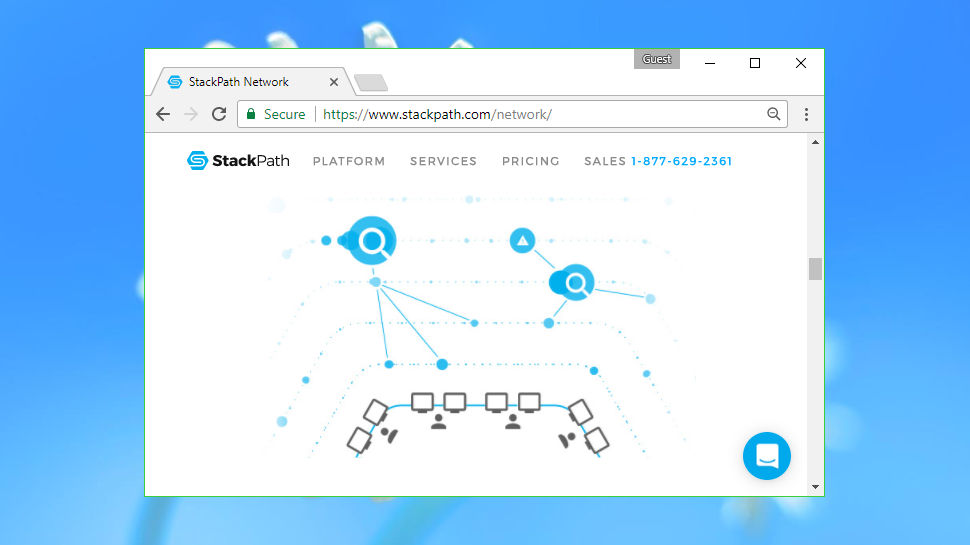
This CDN provider focuses mainly on the West, with 14 points of presence (PoPs) in North America, and nine in Europe. There are only six PoPs in South America, four in Asia, and two in Australia.
StackPath is user-friendly, complete with a straightforward web console to manage your settings, and if you do get stuck, there’s extremely efficient technical support available via either live chat or phone.
Performance seems good in the US and UK, and indeed Europe, but further afield you may see things tail off a bit, which is hardly a surprise given StackPath’s aforementioned focus on Western nations.
Another strength here comes on the security front, with this CDN giving users free shared SSL (or the option to use your own SSL certificate, if you prefer). There’s also anti-DDoS technology, a capable Web Application Firewall, and EdgeRules, a powerful tool that lets you customize the behavior of StackPath's CDN at different phases of the CDN request.
All in all, this is a tempting offering with a baseline plan that charges $10 (£7.9) for up to 1TB of bandwidth per month. At least that was the case, currently, you'll need to contact the sales for more info.

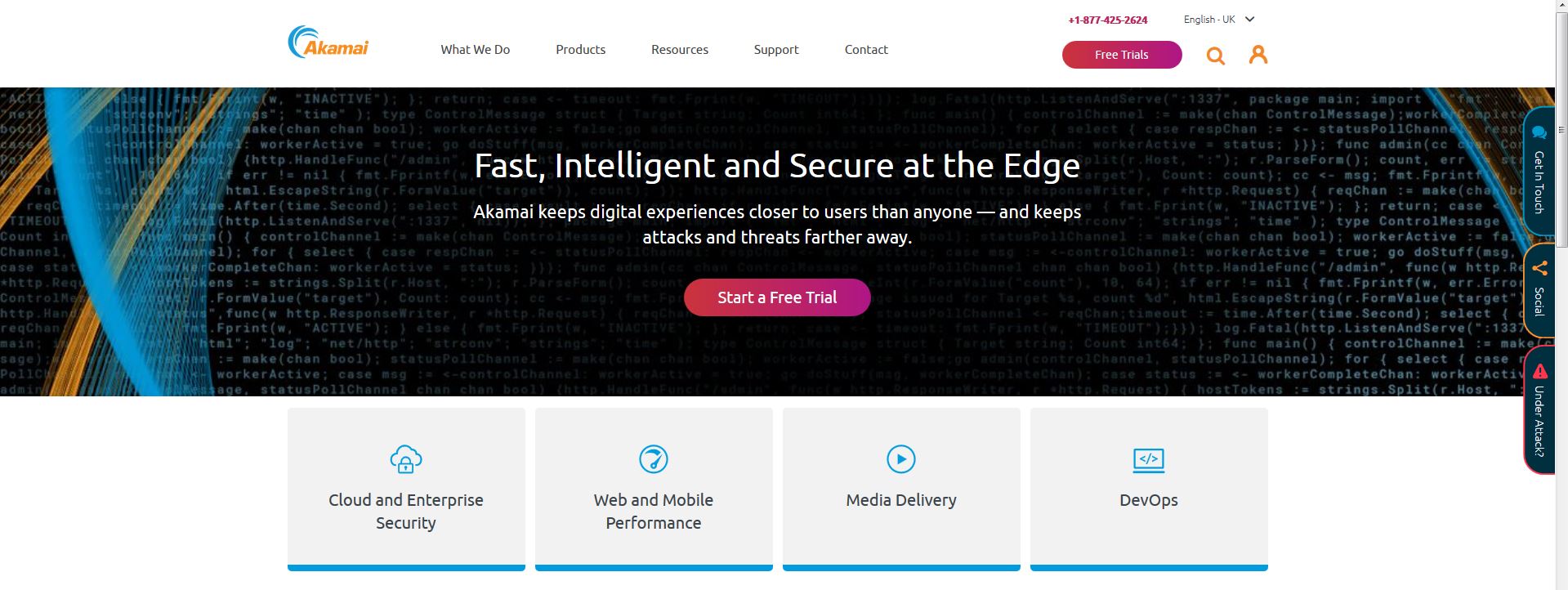
One of the oldest and most popular providers, Akamai offers a great CDN service and according to the company they serve up to 30% of all internet traffic. Being one of the oldest providers their server coverage is impressive with around 275,000 servers in over 135 countries. Akamai also provides great 24/7 customer support which is to be expected from someone this long in the business.
Setting up might be a bit problematic for newbies though. This doesn’t mean newbies can't do it or that they would have much trouble, it’s just that the whole service is more leaned toward advanced users, generally speaking.
Akamai has a good number of features and the performance is quite impressive, among the best in fact. For instance, at the time of writing, the benchmarking site CDNPerf ranks Akamai among the eight fastest services worldwide.
Pricing is a bit tricky, as there is no definitive information to be found on their website, so this means you’ll have to contact them directly to get the exact quota. Thankfully, they are easy to contact and you can do it by live chat, email or phone.

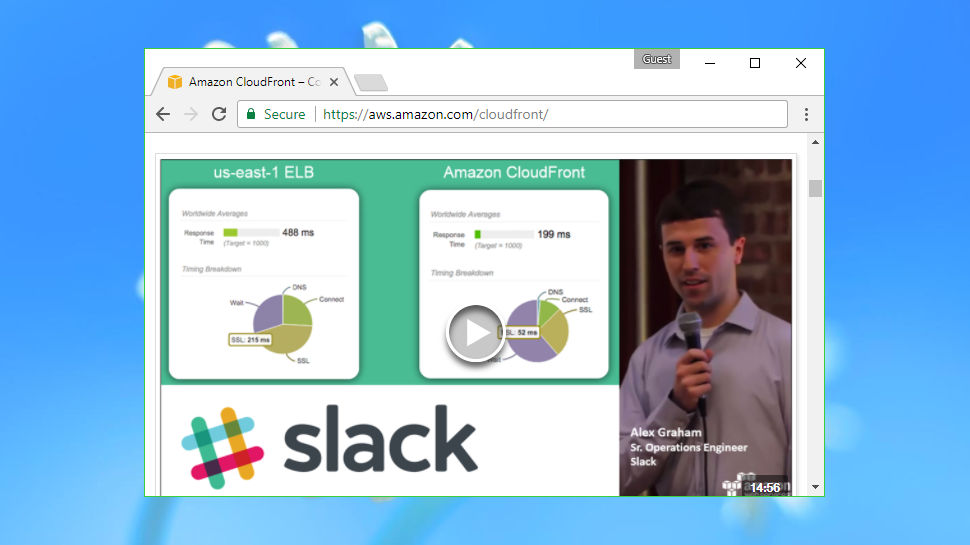
Amazon CloudFront is the CDN facet of AWS (Amazon Web Services), so it’s certainly part of a heavyweight operation. And indeed CloudFront offers a raft of advanced features as you might expect, and you can customize all manner of things such as enabling automatic GZip compression for better speeds.
Another strength here is the in-depth analytics on tap, showing you details of your visitors’ device type, OS and so forth. There’s also the handy ability to set up alerts, meaning you can be warned when data transfer usage goes above a certain level.
The downside to all the options on offer is that relative novices to the CDN world may find CloudFront’s control panel a little intimidating, at least initially.
The other slight sticking points are that calculating pricing can be a rather tricky matter, and if you aren’t an experienced user familiar with CDN basics, tech support isn’t free – if you need help, you’ll have to fork out for it. Prices vary depending on region, but the good news is there’s a free tier (which gives you 50GB of data per month for one year).
Performance levels are fairly average, too, but there’s no denying the power and configurability that Amazon offers to the slightly more tech-savvy user.

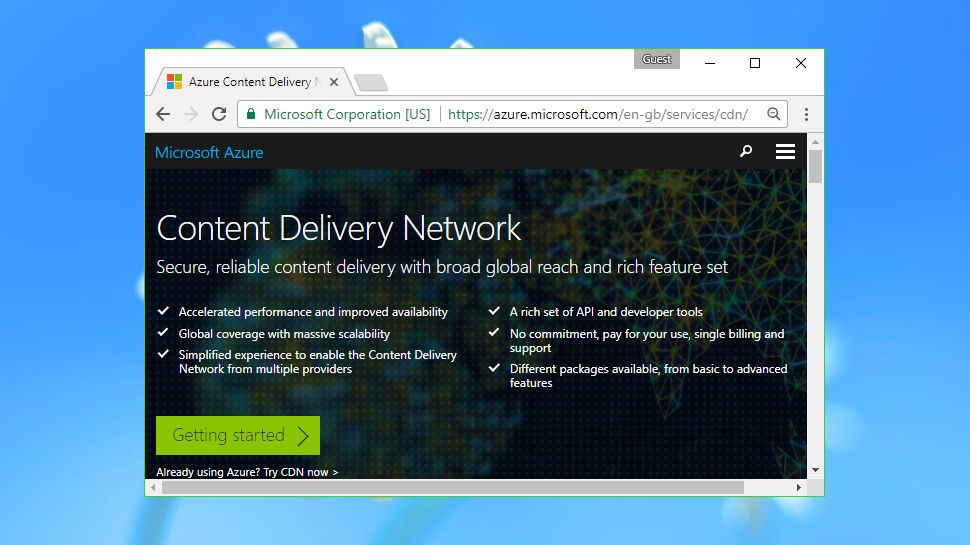
As you’re doubtless aware, Microsoft Azure is a big old stack of integrated cloud tools for building and managing applications and services, with a wide range of coverage including a CDN offering, which is what we’re focusing on here, naturally. Note that this doesn’t use Microsoft’s own edge servers, but rather three plans that use other CDN networks: Standard Akamai, Standard Verizon, and Premium Verizon.
We fully discuss these various plans in our review of Microsoft’s CDN service, linked below, but suffice it to say that in terms of pricing – which can be somewhat confusing to work out – this isn’t the cheapest offering around. Still, those who want integration with other Microsoft technologies and services may well find the price worth paying.
You get a web dashboard that is absolutely crammed with features, although as ever, this means it’s not particularly easy to use for beginners (and the setup process is pretty involved, too). Performance levels are good, and CDNPerf usually ranks it high.
This has to be a tempting prospect if you’re using other Azure services, or if you’re a developer who will appreciate the likes of .NET or PowerShell management features. You can create a free account and get started with 12 months of free services.

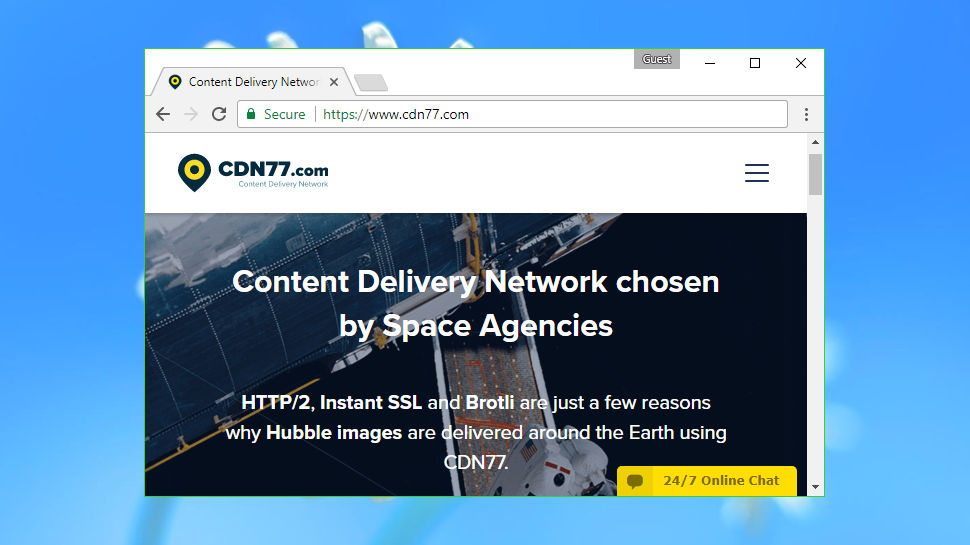
CDN77 is a big-name player in the content delivery game, with some heavyweight clients signed up including the European Space Agency. It has an expansive CDN network with over 35 data centers across the globe, with many of those in Europe and the US, but there are also locations in South America, Asia and one in Australia.
The web console interface is very streamlined and keeps any jargon to a minimum, making it suitably user-friendly for novices to the CDN world. The flipside of this is that there aren’t a huge amount of options, although you can do some tweaking of various settings.
In terms of performance, CDN77 is solid enough, and it ranks as a lower-to-mid pack player that’s unlikely to disappoint, but certainly isn’t the fastest CDN network we found when reviewing these various services.
You get a free Let's Encrypt SSL certificate, and CDN77 is pretty good value for money overall in terms of its per-GB pricing, although it’s not the cheapest outfit we’ve highlighted here. Pricing starts at $0.033 per GB of data for US and European locations, with Asia and Latin America being more expensive. If you want to test the waters, there’s a 14-day risk-free trial, and you don’t need to supply any payment details for this.

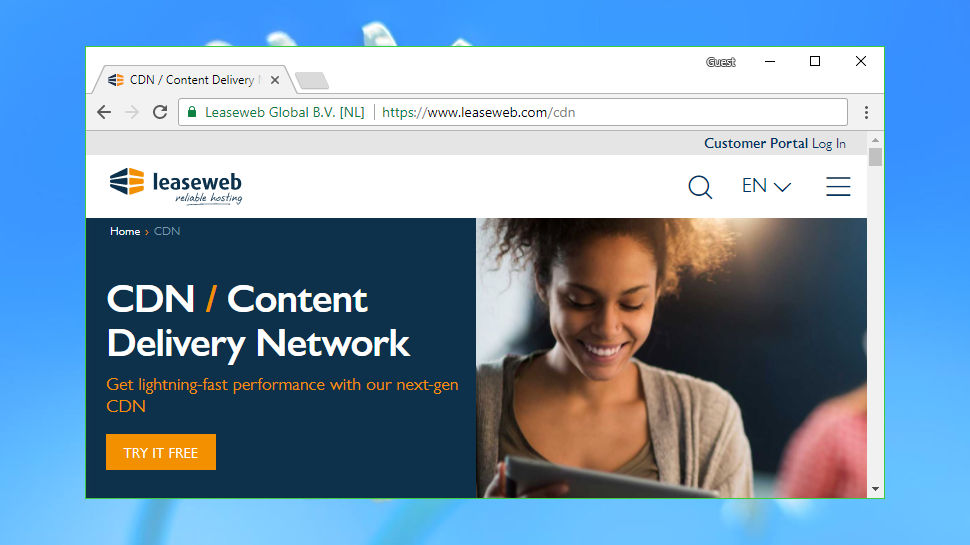
If you need a powerful CDN, look no further than Leaseweb, an enterprise-level operation which is still suitable for regular business users – just about.
Regardless if you want a multi-CDN or a private CDN, you'll need to contact Leaseweb for exact pricing, although don't expect it to be cheap. The good news is that even with a ‘basic’ subscription, you get all the same security and CDN features as the heavyweight enterprise plans.
That includes a smartly designed console for overseeing your CDN needs, complete with an extensive raft of potential settings and tweaks, featuring many options you don’t get with your average service (like the ability to set the cache-control header, or determine how long to cache 404 responses).
There’s also an in-depth statistics section which displays graphs and charts showing many interesting stats, such as visitor and traffic breakdowns, cache performance and the top file types which are seeing action.
The one somewhat bleak spot is Leaseweb’s performance, which seems somewhat off the pace going by CDNPerf’s findings, although it’s difficult to gauge exactly what results you’ll get in practice. Users who want a powerful range of features in their CDN could give the 30-day trial a go to find out.
What is a CDN?
Evelyne Kuo, Content Strategist at BaishanCloud
A content delivery network (CDN) is a globally distributed network of Points of Presence (PoP) designed to provide faster and reliable content delivery to users. Whether we know it or not, every one of us interacts with CDNs daily; when reading articles on news sites, shopping online, watching Netflix, or scrolling through social media feeds. CDN is the helper behind your seamless experience. It helps minimize loading time, costs, delivery latency, and operational complexity by physically reducing the distance between content providers and users worldwide.
How does CDN work?
For example, when a user in the US wants to load a website hosted in China, the user will need to send a request to the origin in China, and then the origin will send content from China to the U.S. However, it takes a longer time to load the content and might hamper the user experience. This is when CDN comes in. CDN keeps a copy of content at its own PoPs around the world. Based on users’ location, CDN serves the content to users from nearby PoPs whenever possible.
What are the benefits of using CDN?
1. Faster load time: Instead of sending requests to the origin and waiting for it to respond, the user will receive content from the CDN PoP nearby to reduce the latency.
2. Higher scalability: CDN can serve 40-200 Tbps at the peak of the traffic. It can provide an always-on experience globally, even under unpredictable situations such as malicious attacks or origin failure.
3. Lower bandwidth costs: Through caching and request optimizations, CDN helps content providers significantly reduce delivery costs since most traffic no longer egress from the origin.
4. Better security: CDN acts as a proxy in front of the origin server, which adds an extra layer to security by hiding the origin's real IP.
Why is CDN essential in this pandemic?
Because of COVID-19, most people are on digital platforms more frequently for working, attending online classes, watching live streaming, gaming, etc. Due to the enormous traffic, the entire digital pipeline is becoming more sensitive to latency and security.
CDN can help deliver content in a fast, secured, and seamless way ensuring a consistent and optimized user experience worldwide.
- Also check out our roundup of the best web hosting services
October 08, 2021 at 06:50PM from TechRadar - All the latest technology news https://ift.tt/3rc4DrD
via IFTTT

No comments:
Post a Comment